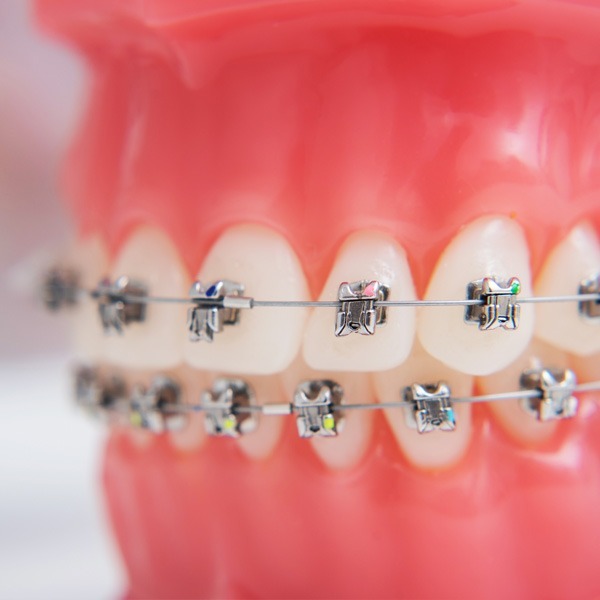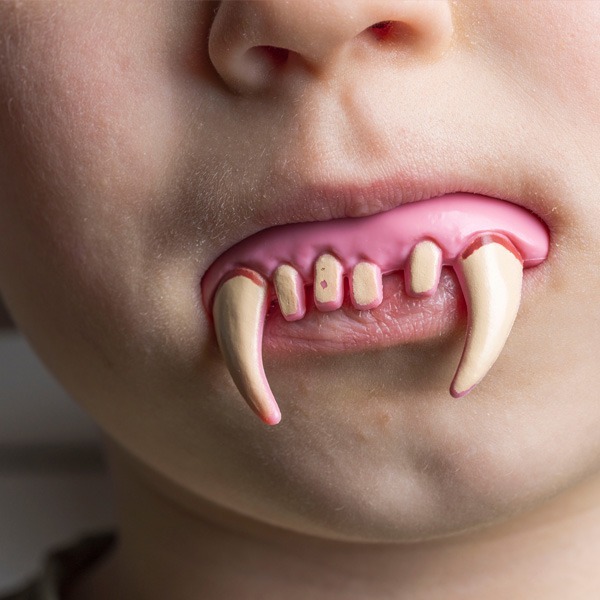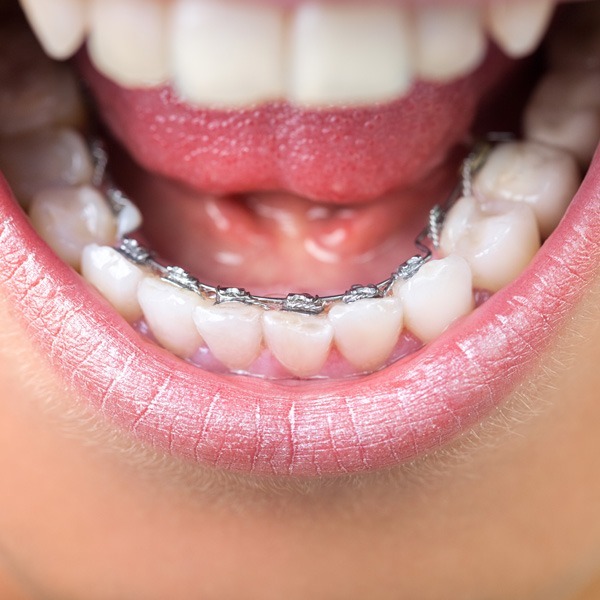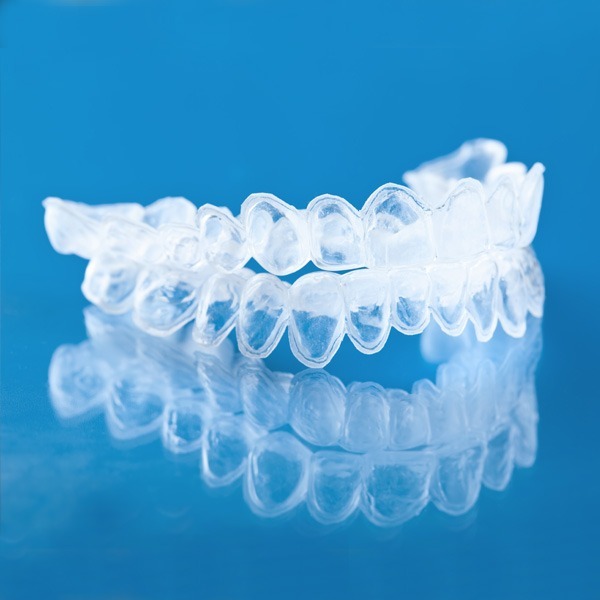Orthodontics
Orthodontics
Orthodontics is a dental specialty focused on treating irregularities in teeth, jaws, and facial structure. The goal is to create a healthy, functional bite, boosting disease resistance and enhancing appearance for overall well-being.
Specialist orthodontists are dentists with extra years of training, primarily in correcting misaligned teeth and jaws through braces and other methods.
They also specialize in dentofacial orthopedics, which involves normalizing jawbone structure to balance facial features.
While all orthodontists are dentists, only 6% hold the title of specialist orthodontists.
This version is more streamlined and gets straight to the point.


Orthodontic appliances
Braces are the primary tool used by orthodontists to alter the appearance of teeth and mouth, although they come in many variations.
The choice of appliance depends on various factors: age, case complexity, specific issues to be corrected, technological advances, safety, patient preferences, level of cooperation, and cost.
Devices are generally tailored for different life stages: childhood, adolescence, and adulthood. They can be either fixed or removable, though the latter is largely outdated. Some are custom-designed in labs based on precise orthodontist instructions, while others are fitted directly onto the teeth.
Appareils Fixes
Among fixed appliances, brackets are the best known.
They consist of metal brackets attached individually to each tooth.
These brackets are connected by a metal wire called an “arch”, creating a structure in each dental arch.
There are various variations of these braces, from the traditional metal ones, placed on the outside of the teeth and therefore visible, to partially ceramic versions for greater discretion. Some are even positioned on the inside of the teeth, completely invisible from the outside (lingual braces).
Traditional, non-lingual fixed appliances are available in many different versions.
Various other accessories are part of orthodontic appliances, including intra-oral elastics, metal springs and, above all, mini-screw anchors.
Among fixed appliances, brackets are the best known.
They consist of metal brackets attached individually to each tooth.
These brackets are connected by a metal wire called an “arch”, creating a structure in each dental arch.
There are various variations of these braces, from the traditional metal ones, placed on the outside of the teeth and therefore visible, to partially ceramic versions for greater discretion. Some are even positioned on the inside of the teeth, completely invisible from the outside (lingual braces).
Traditional, non-lingual fixed appliances are available in many different versions.
Among these, the most technologically advanced are the recent generations of so-called “self-ligating” or “low-friction” appliances.
These devices offer major advantages for the patient:
– Reduced overall treatment time,
– Fewer appointments in total,
– Less time per session,
– Better-quality final result,
– Greater comfort.
Thanks to advances in digital orthodontics, other benefits are also available:
-Greater personalization of the appliance for each case,
-Preview of results at the end of treatment via virtual simulation of tooth movements.
Divers autres accessoires font partie de l’appareillage orthodontique, dont les élastiques intra-oraux, les ressorts métalliques et surtout les mini-vis d’ancrage.
Among these, the most technologically advanced are the recent generations of so-called “self-ligating” or “low-friction” devices.
These devices offer major advantages for the patient:
– Reduced overall treatment time,
– Fewer appointments in total,
– Less time per session,
– Better-quality final result,
– Greater comfort.
Thanks to advances in digital orthodontics, other benefits are also available:
– Greater personalization of the appliance for each case,
– Preview of results at the end of treatment via virtual simulation of tooth movements.
Various other accessories are part of orthodontic appliances, including intra-oral elastics, metal springs and, above all, mini-screw anchors.


Orthodontics for adults
The number of adults undergoing orthodontic treatment is constantly increasing.
They are aware that orthodontics can make their teeth more functional and attractive, improving occlusion and dental alignment.
Correct occlusion improves chewing efficiency, prevents functional problems and corrects existing ones.
Misaligned teeth have a negative impact on facial aesthetics and can cause embarrassment when smiling, at any age.
Orthodontics enables these individuals to achieve a functionally correct and aesthetically pleasing set of teeth, promoting a natural smile. This boosts their self-confidence and self-esteem.
Modern orthodontic appliances are less bulky and more aesthetically pleasing, making them easier for adult patients to accept.
Adult orthodontics is often part of a multidisciplinary treatment involving other dental specialties such as periodontics and prosthetics, for a holistic approach to the complex system of teeth and face.


Early or interceptive orthodontics for children and adolescents
Early or interceptive orthodontics aims to resolve growth imbalances before they become real problems.
An early orthodontic assessment, around the age of 6 or 7, can detect potential occlusal problems and treat them more effectively and less invasively.
Early intervention guides dentofacial growth and development, preventing more serious problems in the permanent dentition.
If early treatment is not necessary, the orthodontist can carefully monitor growth and development to begin full treatment at the ideal time.
We can list the results of early treatment as follows:
– Creating space for erupting teeth,
– Achieving optimal facial symmetry,
– Reduced risk of trauma to prominent upper incisors,
– Preserve space for unerupted teeth,
– Reduce the need for permanent tooth extractions,
– reduce the length of final orthodontic treatment.
Complete orthodontic treatment
This is orthodontic treatment during the permanent dentition, from the age of 13-14.
The aim is to “refine” what has been initiated in the early phase, by aligning and optimizing the occlusion from a functional and aesthetic point of view.
This treatment can be carried out with traditional fixed appliances (brackets or bands) or with transparent aligners.
Full orthodontic treatment is also available for adolescents and adults who have not benefited from early orthodontics. For them, however, treatment is generally longer, taking up to twice as long as for those who received early treatment.
Orthodontic treatment during permanent dentition typically starts around age 13-14.
The goal is to fine-tune early-phase results by aligning teeth and optimizing bite for both function and aesthetics. Treatment options include traditional fixed appliances like brackets or bands, as well as transparent aligners.
Full orthodontic treatment applies to both adolescents and adults who missed early intervention. However, their treatment often takes longer, potentially up to twice as long as those who had early treatment.
Esthetics Orthodontics
Many adults avoid orthodontic treatment simply because of the visibility of braces, which can be aesthetically unacceptable. Indeed, while the presence of braces is commonplace in children and teenagers, it can influence social relationships for an adult.
This influence can be so strong that some patients prefer to leave their teeth misaligned rather than wear visible braces.
Two solutions are generally available:
Many adults avoid orthodontic treatment simply because of the visibility of braces, which can be aesthetically unacceptable. Indeed, while the presence of braces is commonplace in children and teenagers, it can influence social relationships for an adult.
This influence can be so strong that some patients prefer to leave their teeth misaligned rather than wear visible braces.
Two solutions are generally available:
Lingual Orthodontics
These are metal braces applied to the inside of the teeth and are therefore invisible.
Lingual (or internal) fixed braces are generally more expensive than traditional vestibular (external) braces, and this occurs for several reasons:
– The quality of the materials used,
– Elaborate appliance design,
– Collaboration with specialized laboratories,
– greater commitment on the part of the orthodontist (time, skills, responsibilities and equipment).
The poor success of lingual orthodontics is determined by some of the characteristics described above (cost, technical difficulties), but also by two other important factors:
– The presence of metal elements in direct contact with the tongue is uncomfortable and often painful for the patient,
– Treatment times, for an equivalent defect to be corrected, are on average longer than with other types of appliance,
– Individual sessions with the dentist are longer and more frequent,
– Treatment results are on average less satisfactory, even taking all the above points into account.
For the above reasons, we do not recommend lingual braces.


Transparent aligners
This orthodontic treatment, also known as “invisible braces”, has become the benchmark for orthodontic treatment.
The aligners are transparent, thermoformed plastic trays, custom-made from an impression of each patient’s oral cavity.
The impression, taken at the start of treatment, can be made using traditional pastes or a digital intraoral scanner.
When worn, transparent aligners induce forces that enable orthodontic movement.
The advantages of digital orthodontics with transparent aligners are numerous for patients:
– Better results,
– shorter treatment times,
– Lower cost,
– No pain,
– Fewer appointments,
– Reduced duration of each appointment,
– Reduced appointment frequency,
– Better oral hygiene management
– Virtually no aesthetic impact,
– Easier appliance management at home.

The use of transparent aligners in adult patients and minors
This type of treatment is generally recommended for adult patients who, over the years, have noticed a loss of symmetry in their smile and wish to realign their teeth without resorting to a conventional, unattractive fixed appliance.
Transparent aligners can also be a good alternative for growing patients, where this approach can deliver excellent results. In this case, however, it may be necessary to use mobile and/or fixed appliances before aligners can be used.
For aligner treatment to be effective, it is essential that the patient follows the dentist’s recommendations. The aligner must be worn at all times, day and night, and removed only for eating and brushing. Failure to observe the recommended wearing time for aligners can result in a slowdown or even failure of the treatment plan.
Are transparent aligners suitable for all patients?
Virtually all major orthodontic movements can be performed with aligners: horizontal, vertical and rotational.
Aligners can be used to close diastemas, i.e. open spaces between teeth (subject to the size and position of these spaces). Similarly, they can treat overhangs – i.e. where the upper incisors overhang the smaller lower incisors – as long as this condition remains mild or moderate.
Before starting treatment with aligners, the dentist must assess whether the appropriate conditions are present.
Obstacles to orthodontic therapy may include:
– Presence of active periodontal disease (receding gums).
– Presence of complex prosthetic restorations, such as bridges and implants.
– Inability of the patient to consistently comply with the dentist’s recommendations over long periods of time.
Finally, it’s important to remember that in medicine, there are no universally applicable treatments, so it’s necessary to trust the judgment of a specialist orthodontist in choosing the most suitable treatment plan.
This type of treatment is generally recommended for adult patients who, over the years, have noticed a loss of symmetry in their smile and wish to realign their teeth without resorting to a conventional, unattractive fixed appliance.
Transparent aligners can also be a good alternative for growing patients, where this approach can deliver excellent results. In this case, however, it may be necessary to use mobile and/or fixed appliances before aligners can be used.
For aligner treatment to be effective, it is essential that the patient follows the dentist’s recommendations. The aligner must be worn at all times, day and night, and removed only for eating and brushing. Failure to observe the recommended wearing time for aligners can result in a slowdown or even failure of the treatment plan.
Are transparent aligners suitable for all patients?
Virtually all major orthodontic movements can be performed with aligners: horizontal, vertical and rotational.
Aligners can be used to close diastemas, i.e. open spaces between teeth (subject to the size and position of these spaces). Similarly, they can treat overhangs – i.e. where the upper incisors overhang the smaller lower incisors – as long as this condition remains mild or moderate.
Before starting treatment with aligners, the dentist must assess whether the appropriate conditions are present.
Obstacles to orthodontic therapy may include:
– Presence of active periodontal disease (receding gums).
– Presence of complex prosthetic restorations, such as bridges and implants.
– Inability of the patient to consistently comply with the dentist’s recommendations over long periods of time.
Finally, it’s important to remember that in medicine, there are no universally applicable treatments, so it’s necessary to trust the judgment of a specialist orthodontist in choosing the most suitable treatment plan.
Contact us, we are at your disposal
You can write to us to request an appointment, to obtain information or to leave us a comment or advice to improve our services and the reception of our patients.
Cabinet Dentaire de Nyon
Telephone: 022 361 33 00
Address: Rue de la Gare, 11, 1260, Nyon
Mail: info@CabinetDentaireNyon.ch
The office is easily accessible:
By car, with parking spaces available within the building (Parking Bel Air) and 2 parking lots within 300 meters (parking Perdtemps, parking de la Gare)
By public transport: 2.5 minutes walk from the Nyon train station
